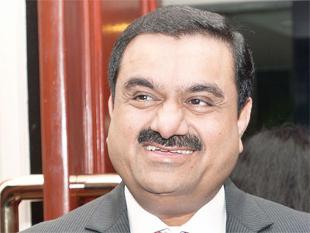Melbourne, Nov 17: Adani Enterprises (ADEL.NS) won support on Monday from the State Bank of India (SBI) and an Australian state to help it build a $7 billion coal mine, defying a slump in coal prices to 5-1/2 year lows that has stalled rival projects.
The trading and infrastructure conglomerate signed a memorandum of understanding for a loan of up to $1 billion from the SBI for the mine, rail and port project in Queensland, which it aims to build by end-2017.
 "The MOU with SBI is a significant milestone in the development of our Carmichael mine," Adani Group Chairman and founder, Gautam Adani, who has close ties with Indian Prime Minister Narendra Modi, said in a statement.
"The MOU with SBI is a significant milestone in the development of our Carmichael mine," Adani Group Chairman and founder, Gautam Adani, who has close ties with Indian Prime Minister Narendra Modi, said in a statement.
Adani was in Brisbane with a business delegation for the G20 summit, which Modi attended over the weekend.
The company also won a commitment from the state government to take short-term, minority stakes in rail and port infrastructure needed to unlock massive coal reserves in the untapped Galilee Basin. Coal from the region must be sent 400 km by rail to Australia's east coast.
Adani aims to reach a final investment decision on the Carmichael project in late 2015.
Australia's federal and Queensland governments are eager to see the mine built following the loss of more than 4,000 coal jobs over the past two years, but analysts and project finance experts believe Adani may have underestimated the challenge of raising funds for the project.
"People have been very sceptical about the financing of this project. As we always said, we'll keep getting this, one by one. The pieces are falling in place," Adani Mining CEO Jeyakumar Janakaraj told Reuters.
Adani, which is also facing a campaign by anti-coal campaigners, is counting on securing A$1.2 billion to A$1.5 billion in funding from South Korea's export credit agencies, as well as a loan from the U.S. Export-Import Bank.
The company's apparent momentum on Carmichael is in stark contrast to rival Indian firm GVK's slow progress on another huge coal mine in the Galilee Basin, the Alpha project, which is co-owned by Australian billionaire Gina Rinehart.
Much bigger coal rivals, like BHP Billiton (BHP.AX) and Glencore (GLEN.L), have shelved coal developments at a time when a third of Australia's coal output is making losses.
Janakaraj dismissed comments by Indian Power and Coal Minister Piyush Goyal that the country may be able to stop importing thermal coal within three years.





Comments
Add new comment